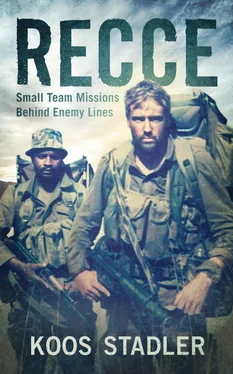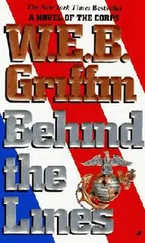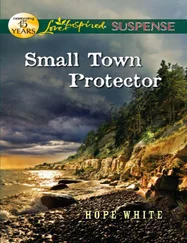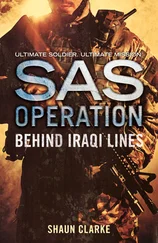By the third evening I was certain that we were close. We had located fresh tracks, all leading towards the suspected target area, and we occasionally heard the distinct crack of AK shots. That night we kept moving northwest on our bearing, past the area we now knew was the hot spot. In the early evening we heard vehicle movement for the first time. I duly took the bearing and logged it.
Bingo! Right direction. Right distance.
At first light the next morning we were hidden away in a thicket, backpacks camouflaged, food and water handy for the day, antenna up and the radio prepared. At any time now we could expect a security patrol or a hunting party to come by. We knew from experience that the stationary person had the advantage. In the flat savanna terrain, with its occasional thick undergrowth, a man on the move was invariably the first to be seen – exactly why an area reconnaissance in the bush was so difficult.
There was no high ground to establish an OP. Climbing a tree would be counter-productive, as you would just have tree canopy all around you – and in the process expose yourself to early-warning posts. You would be the intruder in a world the freedom fighter knew intimately. You would most likely approach from a direction he had determined – by the position he had chosen for his base. He would have arcs of vision (and of fire) across a chana or flood plain he had picked and prepared.
The fourth day passed slowly and, for me, extremely stressfully. Because of the uncertainty and the urgent need to locate the target, I found it difficult to pass the time. We slept in turns, albeit briefly and fitfully.
We had two days left to confirm the location visually, do a close-in recce and get back to the main force. I found some consolation in the big man’s relaxed demeanour. He seemed unfazed. I prepared a message detailing our finds of the day. Da Costa, lying on his side next to his radio, went through the ECCM procedures and transmitted the message.
There was also a message for us – from James Hills: “UNITA getting restless. Have to move in 2 days. Skuimbolle. JH.”
Literally translated, skuimbolle means “foam balls”. It refers ostensibly to the foam produced between the buttocks of a horse when it pulls a cart. This was Hills’ way of saying we should get a move on.
That night we swung from our original northwesterly bearing to a direction due west, certain that we had passed the base area. We went slowly. The moon was slightly from behind, giving us a minor advantage in case anyone might be stationary in front of us. It was painstaking work, moving from shadow to shadow, anti-tracking with every step, constantly communicating with the other. After covering about three kilometres, I was certain that the base would be directly south of us. We stopped and conferred.
Da Costa agreed. This was it; we could start the approach. “But I think we should take the backpacks,” he said. “We are not close enough yet.”
We decided to move with the packs until the moon had set. In the early hours of the new day we would approach with combat webbing only.
Once the moon was down, we stashed the backpacks and wiped out all signs of our presence before venturing out to locate our target. We used first light to gain a few hundred metres, encountering numerous tracks and cut-off trees, but no SWAPO. Soon we realised that there was no way we could approach the target in daylight, as the undergrowth was becoming too sparse. We went down and, after conferring quickly, decided to go back to the packs.
Back at the hide we crawled in close to the kit and covered each other up, readying ourselves for another long day. As the day dragged on we had a lot to log, again plotting everything we heard on the map. We were close – if only they didn’t find us first!
During the late-afternoon sched we reported that we would be going in close that night. Again we received an urgent message that the main force had to get moving the next day. After last light we kitted up and slowly closed in on the area where we believed the base was. By now we were patrolling at a snail’s pace, working our way due south. Following a technique we called caterpillaring, Da Costa patrolled a few hundred metres forward in light order, and then returned for his kit. We would then both move forward with the packs to his last position and put them down, after which I repeated the routine.
By midnight we still didn’t have any sign of the base. I was becoming concerned. Had we passed it too far to the west? Or were we still on the eastern side of it?
We took in a hide and tried to work out where we’d gone wrong. “Where is the river line where they are supposed to get water?” Da Costa asked, voicing my concern. “And the road that runs through it?”
“It must be further south,” I said. “They must get their logistics from somewhere…”
Time was running out and we did not know which way to move. I made the call to cache our packs before first light and move out in light order, firstly south and then due west. In this way we should find either the road or the river.
With the first faint light of dawn we were moving, deliberately now. Our eyes were piercing the half-light, and both of us knew that first light was a bad time to walk slap-bang into an enemy base, as soldiers tend to be exceptionally alert at this time. Sound and smell travel far…
We saw it simultaneously – the road running east–west in front of us. While crossing it through a thick patch of undergrowth, we noted three fresh tracks going east, probably to an early-warning post. Away from the road we swung west, and soon came upon the flood plain of a river. My heart was pumping. This was it – the junction of the river and the road, the flood plain across which their arcs of fire would be trained. I looked at Da Costa, and he indicated with a nod that he agreed.
But there was no way of crossing the open area in broad daylight. We went down and started crawling in the short grass towards the river line. Suddenly Da Costa stopped and pressed himself further down into the wet grass, the thumb of his left hand pointing downwards in the classic sign indicating enemy presence.
From the tree line across the river a SWAPO patrol of five or six men emerged, apparently not suspecting anything, as they casually started patrolling along the river line to the south.
Da Costa cupped his left hand behind his ear, indicating to me to listen. But I had already heard the commotion among the tall trees from where the patrol had appeared. I could distinctly make out laughter, a vehicle door slamming and orders being yelled. For some time we just lay there, trying to judge the size of the base by the sounds we were hearing. Occasionally we dared to sneak a peek across the open chana, but we were too low to see into the shaded tree line.
After a while I indicated to Da Costa to move back, as we could also expect a patrol on our side of the river. To get any closer, we needed to approach the target from a different direction.
Slowly we crawled back into thicker bush, making sure not to leave any drag marks on the ground that was still wet with morning dew. We backtracked the same route to our packs from where we moved out a further two kilometres to make comms.
My message was short and to the point: “Base found. Enemy. Number unknown. Need one day and night to confirm.”
James Hills’ voice came on the air. He obviously didn’t bother typing a message: “Negative. Negative. No time. I need you here tomorrow morning. We are moving tomorrow.”
Da Costa and I exchanged glances. No time for a close-in recce? Tomorrow morning? Sixty kilometres to go? Enemy all around? This was a tough one.
I tried once more, a brief message to confirm that we had found the base, but needed time for confirmation. But that was it. The colonel maintained that they couldn’t wait any longer. Time was of the essence. Later he would explain his decision: they had good reason to believe that some of the UNITA elements were in contact with SWAPO, and that our intentions could become known to the Eastern Front HQ at any moment.
Читать дальше












